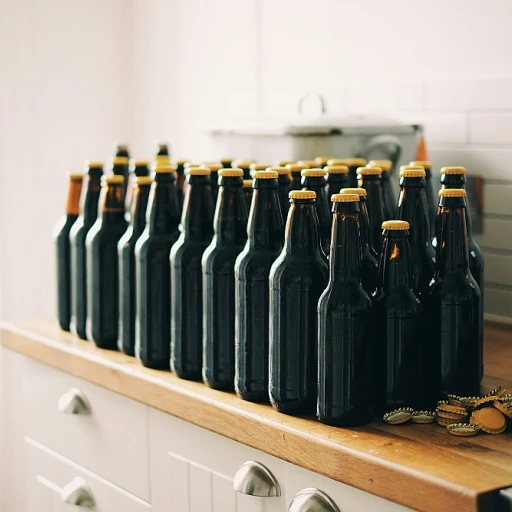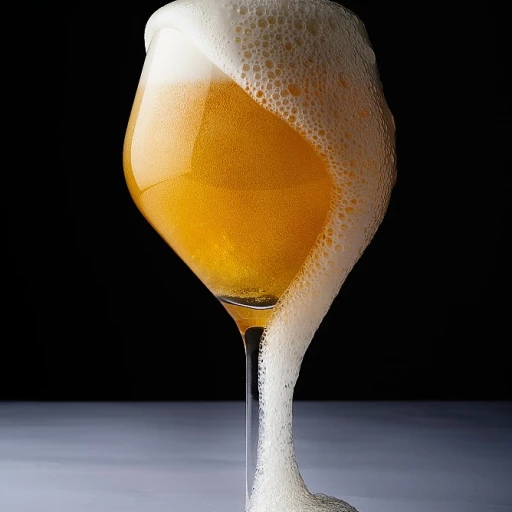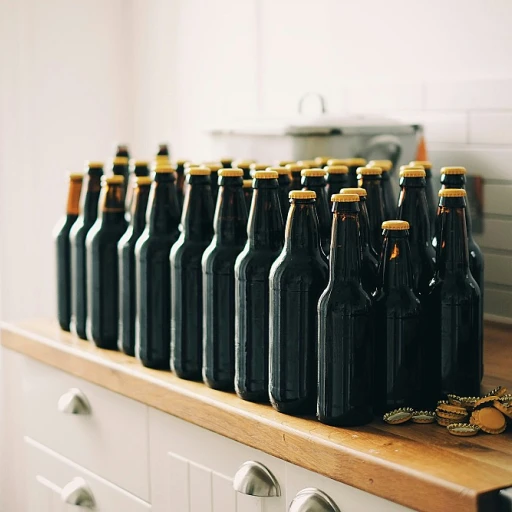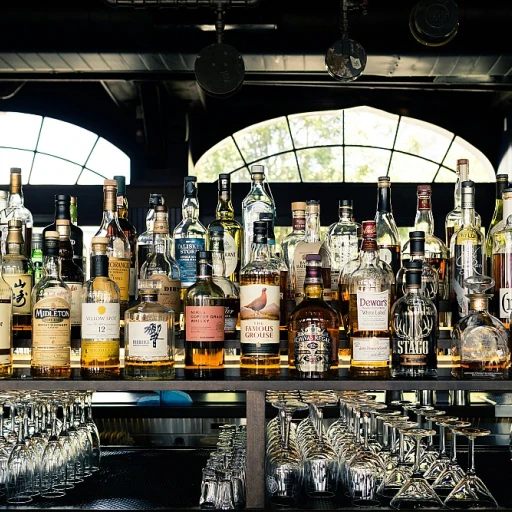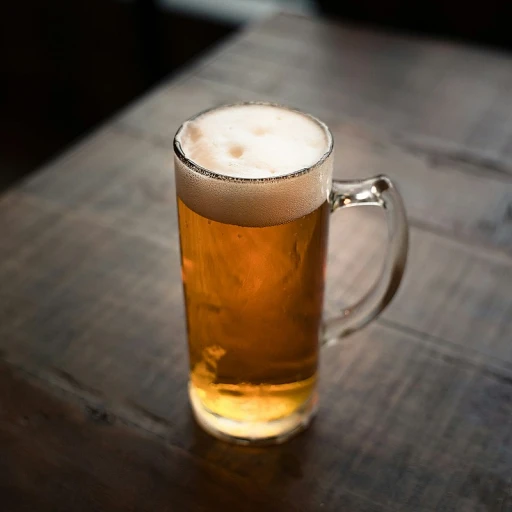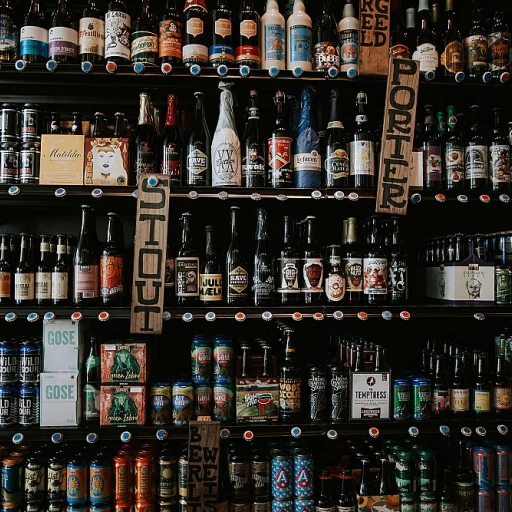
The Basics of Ale and IPA
Understanding Beer Categories
The world of beer can be vast and sometimes confusing, with numerous types and styles vying for our taste buds' attention. Among these are ales and IPAs, two widely loved categories that hold a special place in many beer enthusiasts' hearts. To truly appreciate what sets them apart, it's essential to dive into their foundational aspects.
The Role of Yeast
First and foremost, understanding the difference between ales and IPAs starts with the yeast used during fermentation. Ale yeast is known for fermenting at warmer temperatures compared to lager yeast, resulting in a faster production time and a richer, more complex flavor profile. This category of yeast is used across a variety of beer types, but the core fundamentals unite them under the ale banner.
Hop Influence and Flavor
When it comes to IPAs, or India Pale Ales, hops play a vital role. While all IPAs are ales, they stand out due to their significant hop content, offering a bold, often bitter flavor that can range from floral to citrusy. This hop-forward character is what distinguishes IPAs from their ale counterparts. Keep reading to explore how these flavors are crafted and fine-tuned using different brewing techniques and ingredient selections.
If you're curious about what contributes to the calorie count in these flavorful brews, you might want to understand the calorie count in your favorite IPA.
Flavor Profiles and Ingredients
Differing Flavor Profiles and Key Ingredients
When diving into the world of ales and IPAs, understanding their flavor profiles and the ingredients used can significantly enhance your appreciation for these beverages. Both ales and Ireland pale ales are part of the broader ale family but unique in their ingredients and flavor characteristics.- Flavor Profiles: Ales typically boast a malt-forward taste, which provides a sweet and full-bodied experience. You might notice fruity undertones, such as banana or apple, which are a result of the warm fermentation process. In contrast, IPAs are renowned for their bold hop flavor, which can range from floral and citrusy to piney, often accompanied by a solid bitterness that balances the strong malt presence.
- Key Ingredients: The main distinction lies in the quantity and type of hops used. Ales use a moderate amount of hops, allowing the malt to take center stage. Conversely, IPAs demand a high hop content, which defines their signature bitterness and adds to their aromatic profile. The choice of yeast also varies - ale yeasts ferment at warmer temperatures and are responsible for the fruitier notes, while IPA yeasts are chosen to enhance the hop flavor and aromas.
Brewing Styles and Techniques
Delving into Brewing Traditions and Techniques
When exploring the world of ales, it's important to recognize the vast array of brewing styles and techniques that differentiate them from IPAs. Ales are known for their warm fermentation process, typically occurring at temperatures between 60-75°F (15-24°C). This method encourages the production of distinct flavors and aromas, ranging from fruity esters to spicy phenols, largely depending on the yeast strain used.
On the other hand, IPAs, while falling under the ale category, have their own unique approach to brewing. IPAs generally involve a more vigorous hopping schedule, both during the boil and in dry hopping stages. This results in the characteristic hoppy bitterness and aromatic intensity they're beloved for. The hop variety can significantly influence the outcome, providing a spectrum of flavors from citrusy and piney to more earthy or floral notes.
While both ales and IPAs share the same fermentation process, it's the specific hop treatment and yeast selection that truly set them apart. Furthermore, innovations in brewing continue to provide fresh interpretations of these beloved styles, showcasing the skill and creativity of brewers worldwide.
Alcohol Content and Original Gravity
Comparing ABV and Original Gravity
Understanding the differences in alcohol content and original gravity between ales and IPAs provides valuable insight into their unique characteristics. Both styles can exhibit a vast range of alcohol by volume (ABV), yet IPAs often have a notably higher ABV compared to traditional ales. Ale typically displays an ABV range of about 4% to 6%. This moderate level of alcohol makes it an accessible choice for many beer enthusiasts. By harnessing specific yeast strains and particular fermentation temperatures, ales maintain their mild-mannered ABV while still delivering a rich flavor experience. On the other hand, IPAs are celebrated for their robust nature, with ABVs usually starting around 5% and often climbing to 7% or more. Some IPAs can even reach double-digit numbers, a reflection of the style's hop-forward and full-bodied profile. Additionally, the original gravity—a measure of the beer's density before fermentation—tends to be higher in IPAs due to the increased malt content. The process behind achieving these benchmarks is once again tied to the brewing styles and ingredient choices, securing IPAs' reputation for delivering strong, impactful beers. Whether choosing an ale or an IPA, both styles offer delightful variations, appealing to a wide selection of palates.Popular Variations and Award-Winning Beers
Popular Ale and IPA Variations
Within the vast world of ales and IPAs, there are numerous variations that showcase diverse flavor profiles and brewing mastery. These popular styles often represent the creativity and innovation of brewers, turning traditional recipes into unique experiences.
- American Pale Ale (APA): A well-loved variation of ale, APA is known for its balanced malt and hop profile. With a focus on American hop varieties, this beer delivers citrusy and piney flavors, making it a staple in many craft breweries.
- Session IPA: Catering to those who enjoy lighter yet hop-forward beers, Session IPAs offer lower alcohol content while maintaining the characteristic hoppiness of a traditional IPA. Ideal for social gatherings, these beers ensure you can savor the flavors for extended periods.
- Double IPA (DIPA): Also known as Imperial IPA, this style amplifies the hop intensity, offering bold and robust flavors. With higher alcohol content, Double IPAs are for those who relish strong, hoppy brews with a touch of sweetness from the increased malt.
- English Bitter: A classic ale variation, English Bitter balances malt sweetness with earthy, floral hop notes. Known for its sessionable nature, it pairs excellently with traditional pub fare.
- New England IPA (NEIPA): Recognized for its hazy appearance and juicy flavors, NEIPAs are brewed to emphasize hop aroma over bitterness. This style is beloved for its fruit-forward, smooth, and creamy taste.
- Belgian IPA: Combining the spicy yeast character of Belgian ales with hop-forward IPAs results in a beer that delights with complexity. Expect fruity esters, spicy notes, and a range of hop flavors.
These variations underscore the diverse possibilities in brewing ales and IPAs, each offering distinct attributes for the discerning palate. Whether you prefer a hop-heavy experience or a balanced, malty brew, there's surely a style out there to suit your taste.


